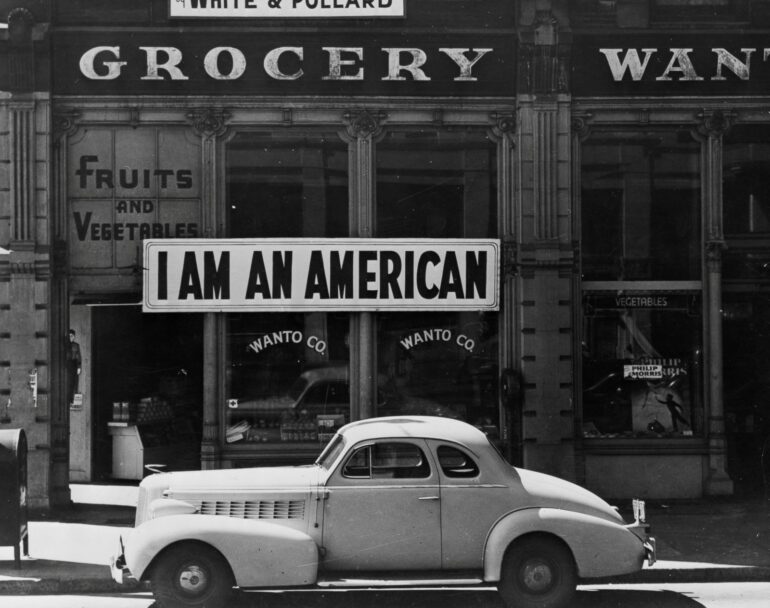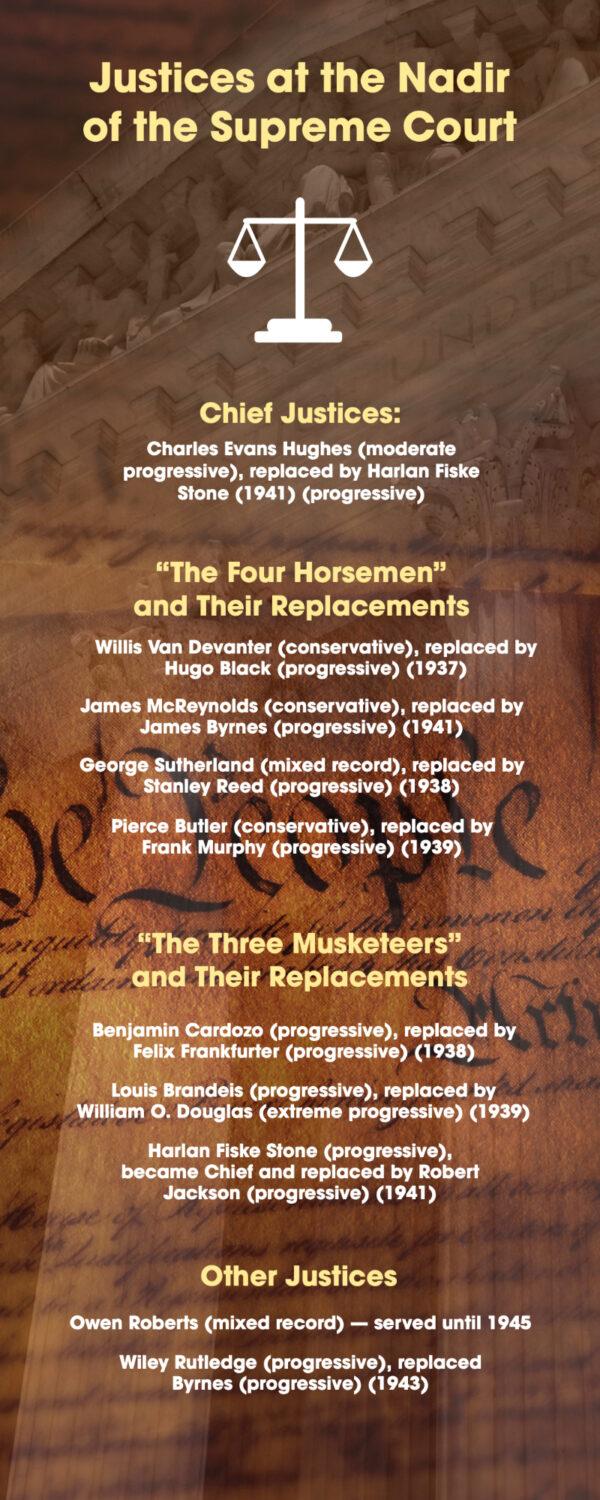
How the Supreme Court Rewrote the Constitution Part 7
This is the last installment in a series on the nadir, or low point, of the U.S. Supreme Court. This was the period from 1937 to 1944, when the court stopped protecting the Constitution’s limits on the federal government. Our Constitution has never fully recovered.
The first, second, third, fourth, fifth, and sixth installments related to how the justices initially tried to balance the demands of President Franklin D. Roosevelt’s New Deal with the Constitution’s rules. In 1937, however, Roosevelt began to replace sitting justices with New Deal enthusiasts who had no prior judicial credentials. The remodeled bench successively discarded limits on federal spending, federal property ownership, and federal economic regulation. In at least one case, it abandoned habeas corpus and the right to a trial by jury.
1942 to 1944: The Attack on Japanese Americans
In 1942, military authorities imposed a curfew on the populations of Western states. Curfews are understandable in times of war. However, this one applied only to a single ethnic group: people of Japanese ancestry, including U.S. citizens. People of German and Italian ancestry never faced curfews, even though the German saboteur episode discussed in the previous installment showed that the East Coast was vulnerable to attack. The evidence was strong that racism contributed to the distinction.
Two additional military orders required that all people of Japanese ancestry within those Western states both remain at home and leave the affected states. These two orders were obviously contradictory.
Still another decree required all people of Japanese ancestry to report to a “Civil Control Station.” Civil Control Stations were centers for deportation to concentration camps. There, people of Japanese ancestry—again, including U.S. citizens—were held indefinitely. There were no charges to answer and no screening procedure to separate the loyal from the disloyal (the British, by contrast, used a screening procedure to test the loyalty of British residents of German and Austrian ancestry. More than 97 percent of those screened were released).
All of these orders were approved by Roosevelt and, indirectly, by Congress.
Gordon Kiyoshi Hirabayashi was a young natural-born U.S. citizen of unquestioned loyalty. He violated the curfew, but continued to live in his home. He thereby complied with the remain-in-place order, but violated the (inconsistent) removal order.
Hirabayashi was convicted of breaking the curfew and removal orders. He received a jail sentence for each. The sentences were concurrent, which means that they were to run at the same time. He appealed his two convictions, and the case ended up before the Supreme Court.
This was important for two reasons. First, the removal order was far more intrusive than the curfew. Second, the only way to comply with both the removal and remain-in-place orders was to report to a Civil Control Station and be incarcerated.
Rutledge Joins the Bench
In October 1942, Justice James Byrnes resigned from the court to head FDR’s Office of Economic Stabilization. His replacement, Wiley Rutledge, took office in February 1943.
 While serving as a law professor, Rutledge had been an outspoken supporter of the New Deal and the court-packing plan. FDR rewarded him with a judgeship on a federal court of appeals. Rutledge served there for four years before the president sent him to the Supreme Court. Rutledge was the only one of Roosevelt’s many SCOTUS picks with significant judicial experience.
While serving as a law professor, Rutledge had been an outspoken supporter of the New Deal and the court-packing plan. FDR rewarded him with a judgeship on a federal court of appeals. Rutledge served there for four years before the president sent him to the Supreme Court. Rutledge was the only one of Roosevelt’s many SCOTUS picks with significant judicial experience.1944: The Japanese Concentration Camp Case
Constitutional scholars of all political stripes agree that Korematsu v. United States (pdf) was one of the worse Supreme Court decisions ever issued. Fred Toyosaburo Korematsu, another young U.S. citizen of unquestioned loyalty, had been convicted of failing to obey the removal order. On Dec. 18, 1944, the justices sustained the conviction.
The opinion of the court was composed by Hugo Black. That opinion, like so many Supreme Court pronouncements during this era, was laden with evasions, doubletalk, and outright dishonesty.
Initially, Black purported to give Korematsu the highest level of protection—what we now call “strict scrutiny.” Racial restrictions, Black wrote, were “immediately suspect” and “subject … to the most rigid scrutiny.” But then Black yielded up the young man because “we cannot say that … the Government did not have ground for believing” removal was militarily desirable. Of course, a standard such as “we cannot say that … the Government did not have ground for believing” is hardly “the most rigid scrutiny.”
Black pretended that the order Korematsu violated was for removal only. However, Korematsu proved that the only permissible way to follow the removal order was to report to a Civil Control Station. There, he would be detained and shipped to a concentration camp without hope of release.
“We deem it unjustifiable to call them concentration camps,” Black insisted toward the end of the opinion.
Another lie.
Conclusion: The Nadir of the Supreme Court
The years 1937 to 1944 represent the low point—the nadir—in the Supreme Court’s long history. The court had issued bad decisions before—some of them egregious. But never had it disregarded its fundamental responsibility to defend the Constitution so deliberately and for so long.
All of this was welcome. But the Constitution had already suffered enormous damage, from which it has never fully recovered. The present condition of the federal government is evidence of that.
During the third century, the Roman Empire was assailed with dynastic chaos, civil war, plague, and multiple invasions. It nearly collapsed. Beginning at about the year 270, however, highly competent, hard-working emperors managed to work a recovery. Their efforts kept the Roman state intact for another century and a half.
Yet this recovery was only partial. This late empire was a darker place than its former self: less prosperous, less extensive, less stable, and less free.
That’s also true of the United States. The Constitution that made American greatness possible has been severely compromised. Whether we fully repair it is our decision to make. We have no emperors to do the job for us.